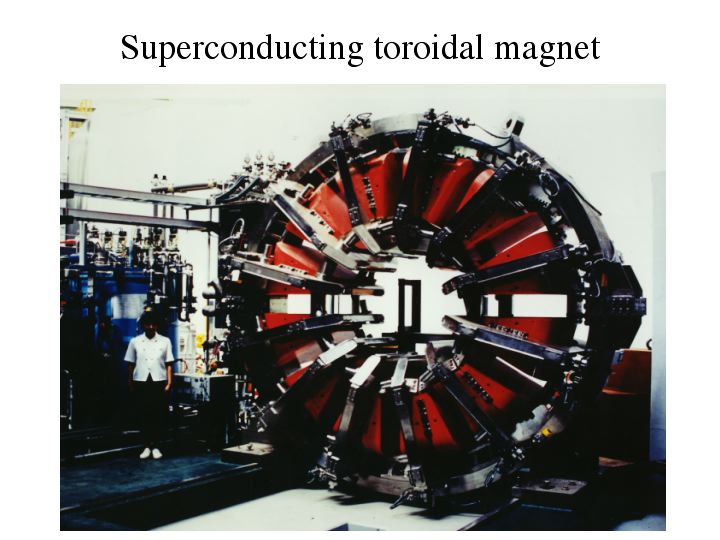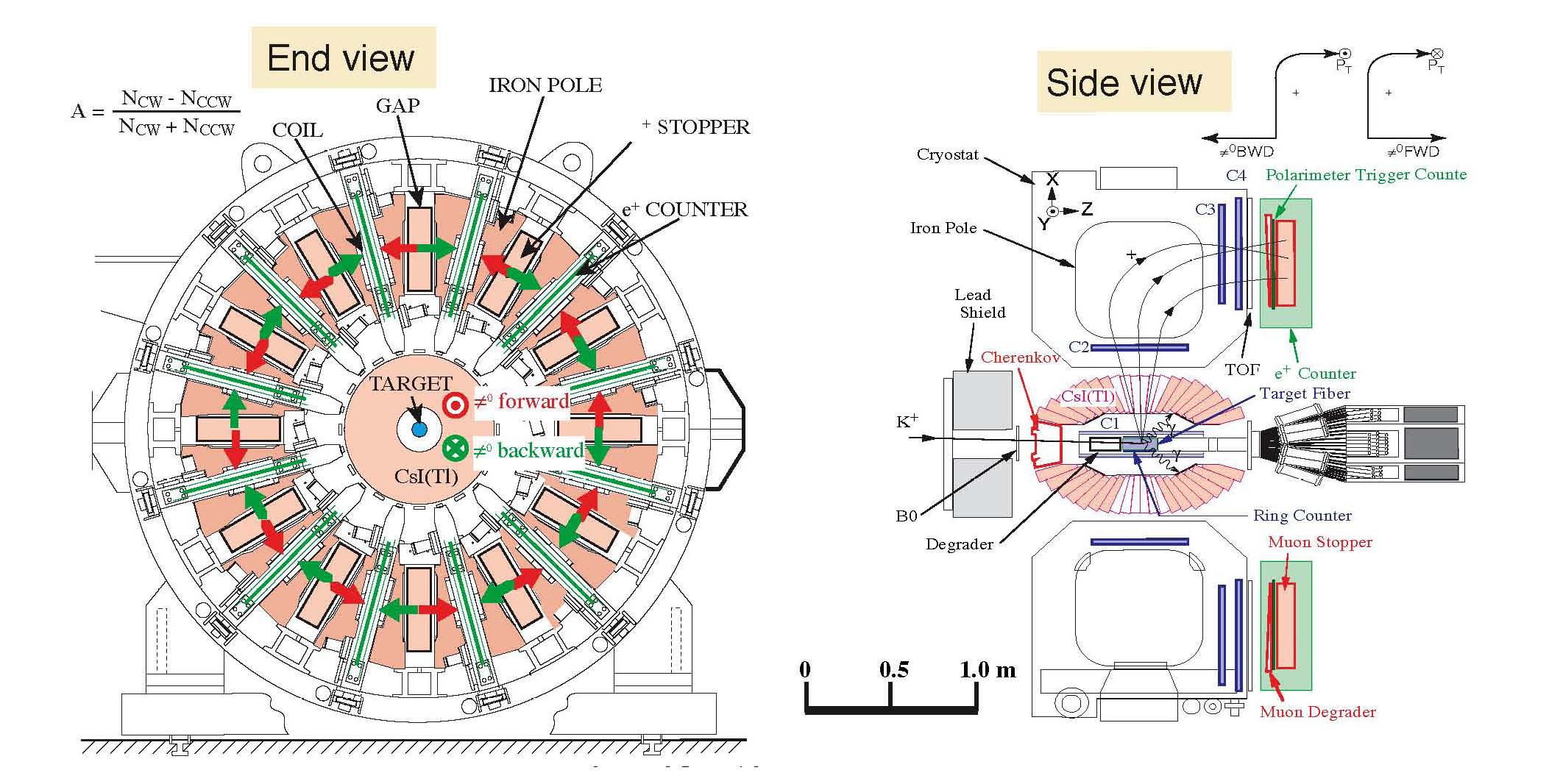
The TREK detector is constructed by upgrading the E246 detector which has been used at the KEK-PS.
It consists of a Superconducting Toroidal Mgnenet,
an active kaon stopping target,
a CsI(Tl) electromagnetic calorimeter,
a charged particle tracking system,
which identify the Kμ3 decays,
and an active muon polarimeter
which measures prcisely the transverse compomnent of muon polarization.
The Toroidal Magnet has 12 identical gaps. Muons from the Kμ3 decays
are momentum-analysed by the magnet and the tracking chambers and stopped
in the active polarimeter.
Two photons from π0 decay in the
Kμ3
decay are detected by the CsI(Tl) calorimeter.
The kinematics of the Kμ3
is uniquely determined by the measurements of
μ+ and π0.
The transverse polarization of muon is determined by
observing the azimuthal asymmetry of μ+
decay positrons.
The principle of the experiment is shown below.

In order to observe a very small value of PT
in the presence of large in-plane polarization components,
a double ratio measurement is performed.
The T-violating positron asymmetry AT
is extracted as a difference of the azimuthal asymmetry between the cases
where the π0
is emitted in the forward direction along the beam axis,
namely the toroid axis, and the π0
in the backward direction,
because the diffrential PT
has the opposite signs there.
The positon azimuthal asymmetry is determined as the emission ratio
difference between clock-wise direction and counter-clock-wise direction.
PT can be further extracted from
AT by dividing it by the analyzing power
α and the kinematical attenuation factor of the measurement.
This π0 forward/backward analysis scheme
can eliminate almost all the systematic errors when combined
the 12-fold rotational symmetry of the spectrometer.
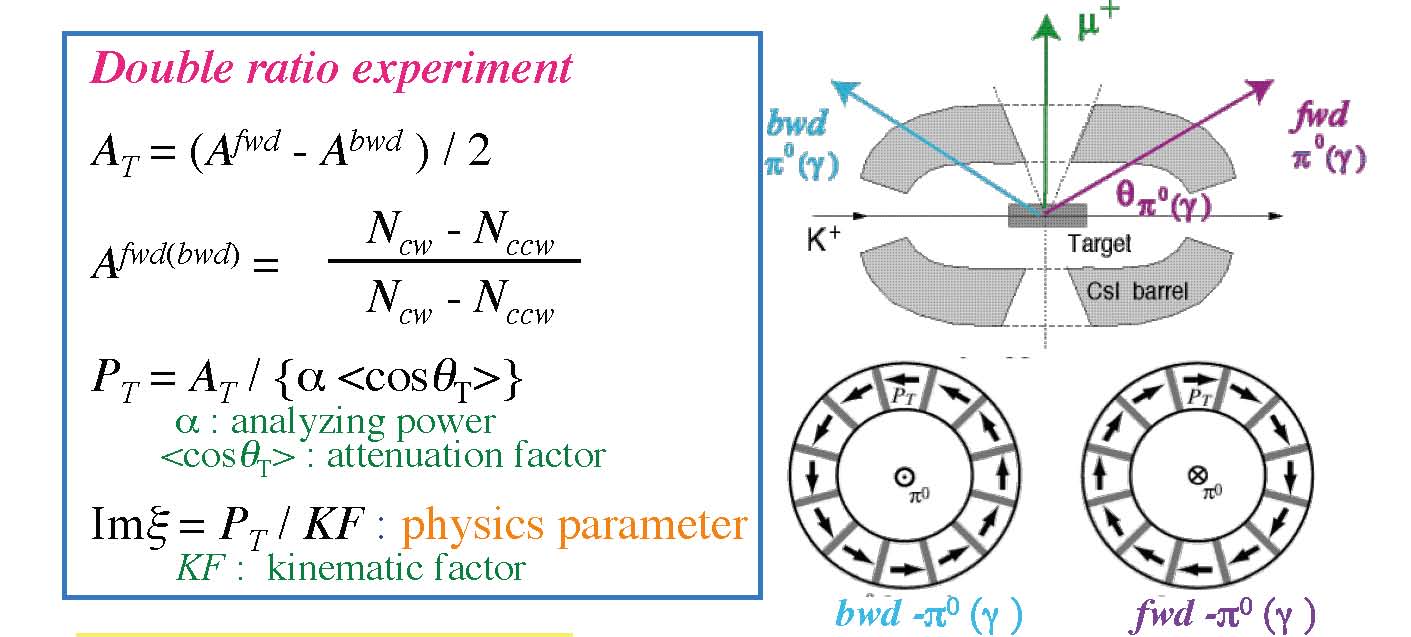
Transverse muon polarization is measured in the active muon polarimeter
which consists of muon stopper plates and gap drift chambers.
Incoming muons are stopped in the stopper plates with a probability more than 85%.
Decay positrons are detected with gap drift chambers and the emission direction
is determined.
Enegy is also roughly determined by the number of penetrating stopper plates.
In this way, a large solid angle for positron detection and
a high analyzing power of polarization are assured.
Since the decay vertex is localozed for each event the backgraound
is drastically suppressed.
In order to hold the transverse compoment of the polarization
and ensure the polarization alignment to the detector system,
the active polarimeter is put in a high precision magnetic field.

Incident positive kaons are stopped in the active target which is a bundle of
rectangular scintillating fibers.
A decay vertex is determined from the energy deposit distribution
of a stopping kaon and the tracking of decay muons.
The target fibers provide also spatial information.
Each fiber will be read by a Geiger-mode avalanche photo-diode
with high internal gain (Hamamatsu MPPC) though optical light guide fibers
of several 10 cm.
The MPPC's locate off beam axis and stand against the beam irradiation.
The bundle of the fibers is surrounded by trigger counters
with relatively high light outputs.
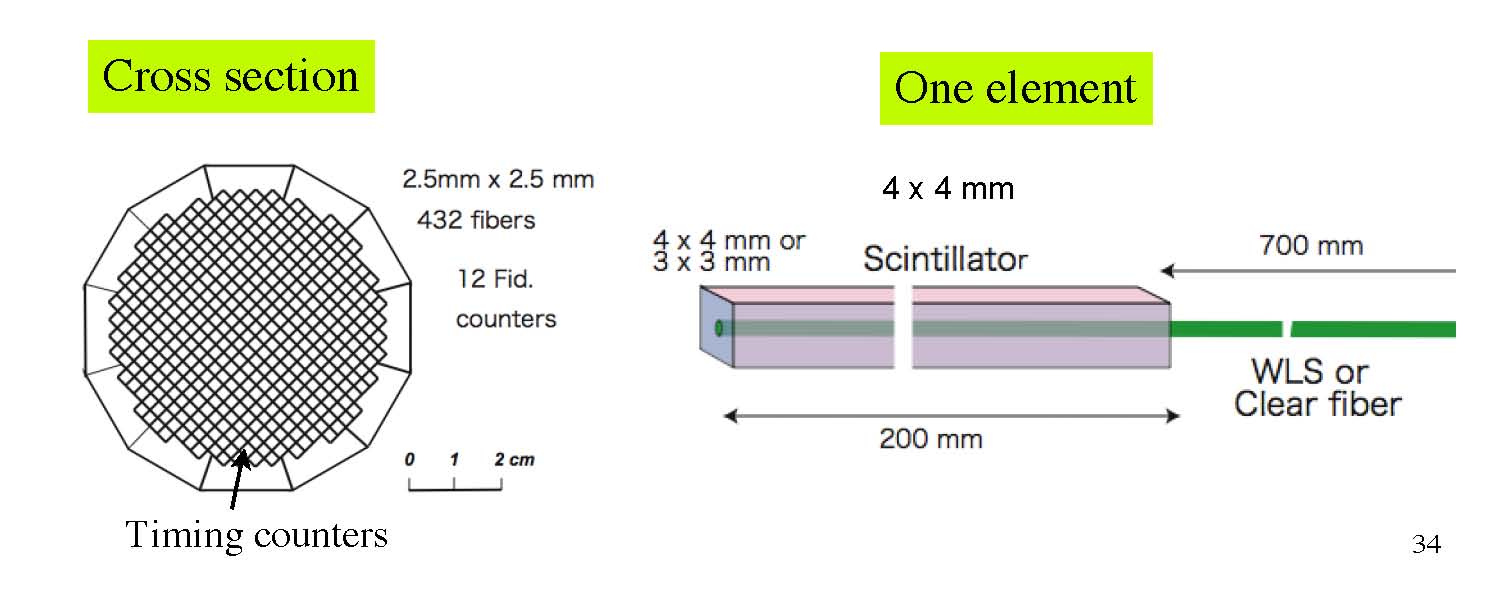
The E246 tracking system will be upgraded substantially in order to strengthen
the suppression capability of the Kπ2 background.
In each spectrometer gap, two new chambers are added.
They are made of gas electron multipliers (GEM) to meet the requirements
from higher event rates at J-PARC and to obtain stable operation.
The innermost C1 chamber will be a cylindrical one.
The C2,C3 and C4 chambers of E246 will be used with
a modification of the C3-C4 ditance.
In order to improve the tracking resolution, spectrometer gaps are filled with He gas.
The electromagnetic calorimeter comprizes 768 CsI(Tl) modules forming
a tower structure with a large solid angle coverage of about 3/4 of 4π.
For chaged particles entering the spectrometer gaps there 12 holes
in addition to the beam entrance and exit.
The PIN photodiode readout employed in E246 will be replaced
by avalanche photodiode (APD) readout to increase the rate performance.
The output wave form from the preamplifiers is read by an FADC,
which resolves also pile-up signal, if any.
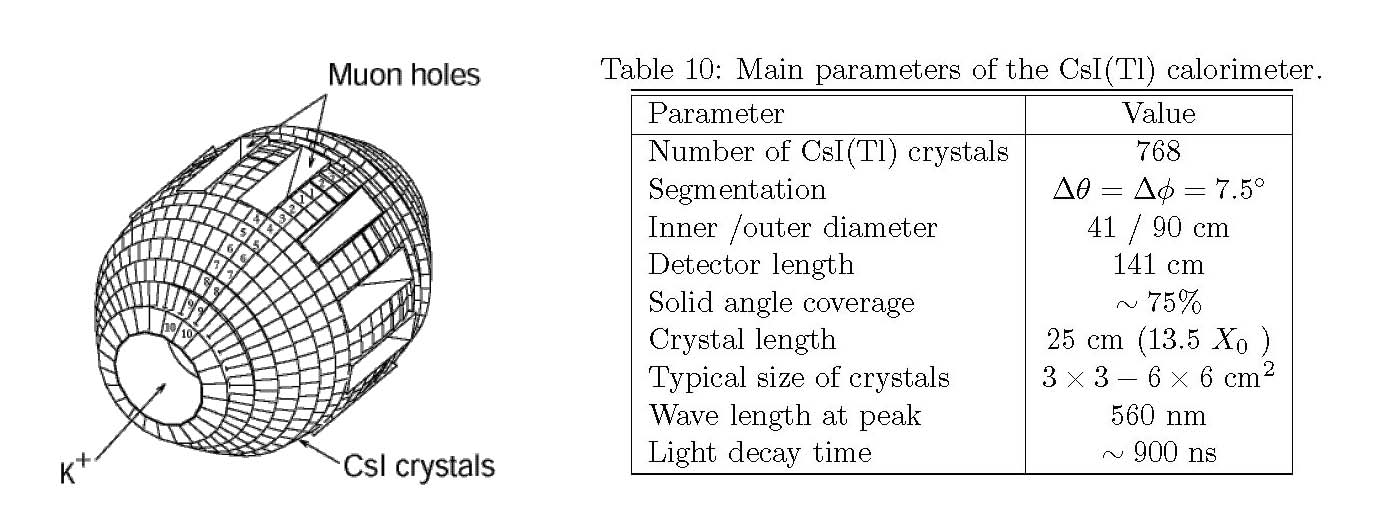
The Supercnducting Toroidal Magnet provides a high magnetic field up to 1.8 T at the magnet center. For the lower excitation used in the TREK experiment the field is nearly dipolar. The magnet was assembled with a very high precision to ensure the 12-fold roratinal symmetry. The coils are cooled indirectly with a two-phase flow of He supplied by an online refrigerator.
